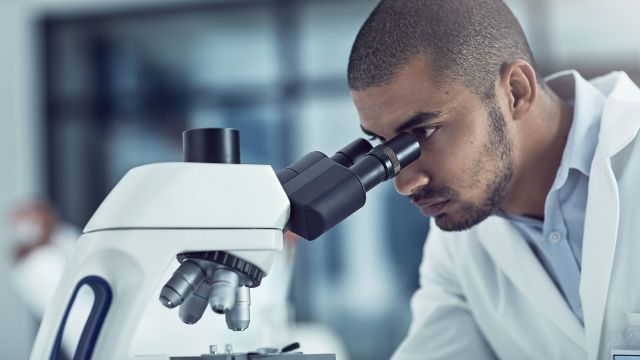Updated on October 11, 2024.
Hodgkin's lymphoma (HL) and non-Hodgkin's lymphoma (NHL) are blood cancers that develop in the lymphatic system. They occur when lymphocytes start to grow abnormally and develop into lymphomas. Lymphocytes are types of white blood cells in the immune system that help protect the body from infection and disease.
Key differences
Although these illnesses share similar names and are both blood cancers, it is important to understand that they are two distinct diseases. The main difference between HL and NHL is the composition of the cells that indicate the disease. When viewed under a microscope, if a specific type of abnormal cell called a Reed-Sternberg cell is detected, it indicates HL. If a Reed-Sternberg cell is not present, it signals NHL.
"Hodgkin's lymphoma doesn't spread via the blood system, rather it spreads lymph node to lymph node in an orderly fashion," explains Owen O'Connor, MD, PhD, an oncologist and American Cancer Society Research Professor based in White Plains, New York. "It is treated with a classic chemotherapy regimen, which cures about 70 percent of all cases."
Non-Hodgkin's lymphoma, on the other hand, is not a single disease. Rather, it's a group of related cancers that can spread via blood or the lymphatic system. Non-Hodgkin lymphomas are divided into two major groups:
- B-cell lymphomas develop from abnormal B-lymphocytes and account for the majority of NHL cases—approximately 85 percent.
- T-cell lymphomas make up the remaining 15 percent of cases. They develop from abnormal T-lymphocytes.
There are more than 70 different types of NHL, called subtypes. While these subtypes share common characteristics, they:
- Look different when viewed with a microscope
- Have different molecular features
- Grow in different ways
- Affect the body in different ways
They also require different approaches to treatment. This usually includes some form of chemotherapy, radiation, or biologic therapy, or a combination of different therapies. “The treatment is tailored to the specific type and aggressiveness that you have,” explains Dr. O'Connor.
Signs and symptoms
As these are diseases of cells that play a role in our immune systems, symptoms are not lymphoma-specific and are similar to those of other illnesses. Common symptoms include:
- Enlarged lymph nodes, which may be causing pain, but may also be painless
- Weight loss without an explanation
- Fever, chills, sweating, and/or night sweats
- Fatigue
- Itching
As these symptoms are common for other illnesses, most people who have these complaints will not have lymphoma. However, if you have persistent symptoms, it is important that you visit your healthcare provider for an examination.
Who is at risk?
Though the causes remain unknown, the risk may be higher in individuals who:
- Have a family history
- Are affected with an autoimmune disease
- Have a weakened immune system
- Have been exposed to chemicals such as pesticides, fertilizers, or organic solvents for a long period
- Have been infected with viruses such as Epstein-Barr, human T-lymphotropic virus type 1 (HTLV-1), HIV/AIDS, or hepatitis C
The risk is also for higher for people who have been infected with certain bacteria, such as H-pylori.







